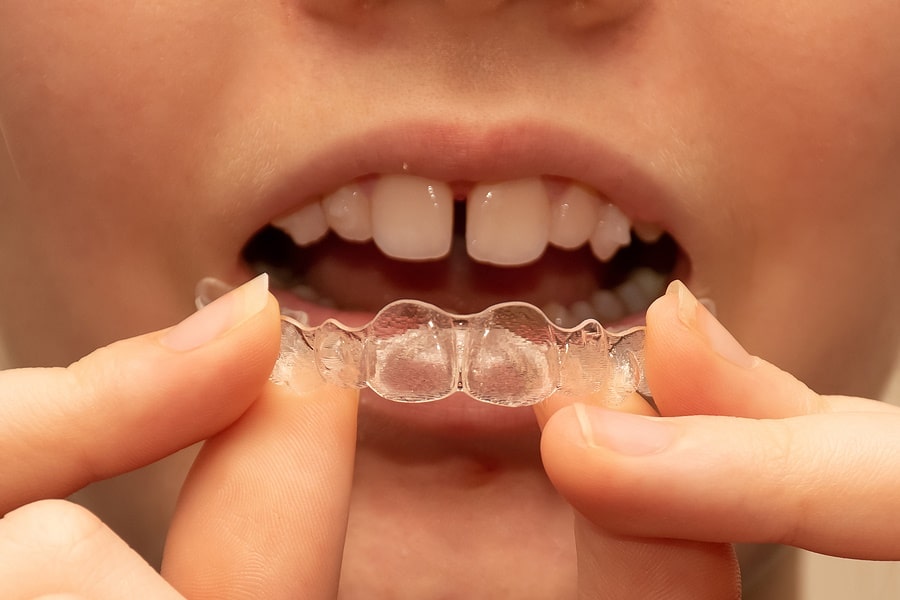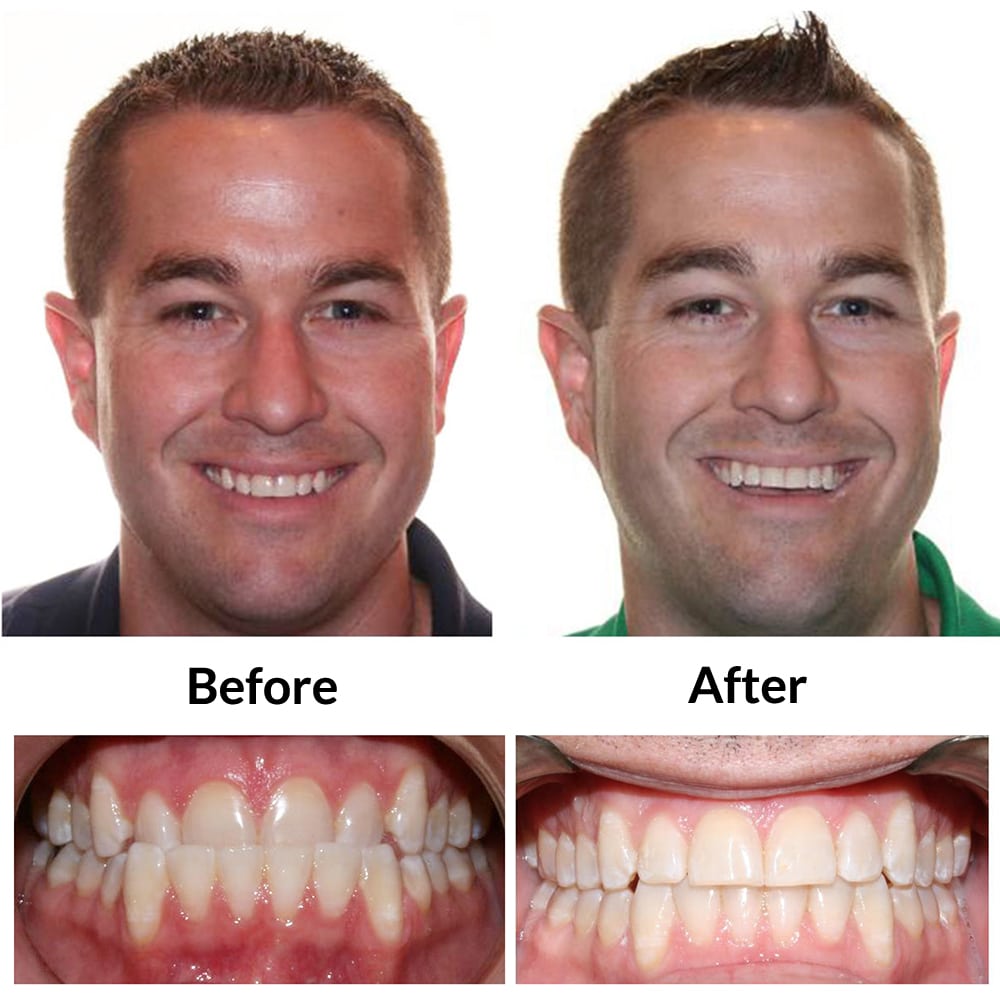Maintaining Oral Health While Making Use Of Invisalign: Tips for a Smooth Experience
Maintaining Oral Health While Making Use Of Invisalign: Tips for a Smooth Experience
Blog Article
Invisalign vs. Conventional Braces: Which Option Is Right for You?
When taking into consideration orthodontic treatment, the choice between Invisalign and conventional dental braces offers numerous important variables that merit mindful analysis. Invisalign provides a very discreet choice with removable aligners, while conventional braces offer an extra noticeable yet efficient service for severe imbalance. Each option incorporates distinct benefits and disadvantages related to appearances, convenience, treatment duration, and cost. Comprehending these subtleties is crucial for making an informed choice that aligns with your individual preferences and lifestyle. The inquiry continues to be: which choice will finest satisfy your orthodontic needs and assumptions?
Overview of Therapy Choices

On the other hand, traditional braces contain metal braces and cables that are bonded to the teeth. This approach uses continuous pressure with time to accomplish positioning. While reliable for intricate orthodontic problems, typical dental braces require normal check outs for modifications and can posture challenges in preserving dental health due to the problem of cleansing about cords and braces.
Both choices have their values, and the choice frequently rests on specific dental conditions, way of life preferences, and individual conformity. Ultimately, getting in touch with an orthodontic expert is important for establishing the most appropriate therapy plan customized to private demands. Recognizing the nuances of each option can dramatically influence the general success of orthodontic therapy.
Visual Factors To Consider
A considerable element affecting the choice in between Invisalign and typical dental braces is the visual appeal each treatment uses. Invisalign aligners are crafted from clear plastic, making them practically unnoticeable when put on. This very discreet appearance is specifically interesting grownups and young adults that may really feel awkward regarding their orthodontic treatment. The capacity to preserve an all-natural smile throughout the positioning procedure can considerably enhance the patient's confidence in social and expert settings.
In comparison, typical dental braces are composed of metal braces and wires, which can be much more noticeable. While developments in orthodontic innovation have actually brought about the advancement of smaller sized braces and tinted elastics, traditional braces still maintain a more noticeable profile. For some individuals, the presence of braces might discourage them from seeking necessary therapy.
Ultimately, the choice in between Invisalign and standard braces might depend upon individual choices pertaining to visual appeals. Clients who focus on discernment frequently favor Invisalign, while those that are less worried regarding visibility might go with conventional braces. Recognizing the aesthetic implications of each choice is vital for making an informed decision that aligns with one's way of life and preferences.
Convenience and Convenience

In terms of benefit, Invisalign aligners are detachable, making it possible for clients to enjoy their favorite foods without restriction and keep optimal oral hygiene. Brushing and flossing are simplified, as the aligners can be gotten throughout these routines, whereas typical braces need careful maneuvering around brackets and cables.
In addition, Invisalign's progressive system enables less orthodontic check outs. Patients typically receive multiple sets of aligners simultaneously, which can streamline the therapy process and minimize time spent in the orthodontist's chair. On the other hand, conventional braces demand normal changes, making them much less hassle-free for those with hectic routines. Invisalign. In general, the comfort and benefit of Invisalign make it an enticing choice for lots of individuals seeking orthodontic treatment.
Treatment Duration and Effectiveness
While both Invisalign and conventional dental braces are reliable in fixing oral misalignments, the period of therapy can differ substantially between the two choices. Usually, Invisalign treatment can take anywhere from 12 to 18 months, depending upon the intricacy of the case. The clear aligners function by gradually shifting teeth right into their preferred placements, and normal follow-ups with an orthodontist aid ensure development remains on track.
In contrast, standard braces usually call for a longer dedication, normally ranging from 18 months to 3 years. This is because of their set nature and making use of cables and braces, which can be much more effective for complex cases and serious imbalances (Invisalign). The treatment efficiency of typical braces is well-documented, as they permit exact changes and higher control over tooth movement
Inevitably, the option between Invisalign and conventional braces may hinge on both the awaited treatment period and the certain dental concerns available. Consulting with an orthodontist is essential, as they can supply tailored recommendations based upon specific demands, making certain the chosen approach aligns with preferred durations and results.
Cost Comparison and Insurance Policy Alternatives
Expense plays a significant function in the decision-making process for people considering orthodontic therapy, whether going with Invisalign or traditional dental braces. Typically, the cost of Invisalign arrays from $3,000 to $8,000, while traditional braces commonly cost between $2,000 and $6,000. Variables affecting these prices include the complexity view website of the situation, the duration of treatment, and geographical place.
Insurance insurance coverage can considerably influence out-of-pocket costs. Several dental insurance policy strategies supply partial coverage for orthodontic therapies, but the specifics can differ extensively. It is essential for clients to assess their insurance policy plans to establish the extent of insurance coverage for either choice. Usually, conventional braces may be more often covered by insurance policy plans compared to Invisalign, which some insurance companies classify as a cosmetic procedure.
Additionally, numerous orthodontic practices use adaptable settlement strategies, making both therapy options a lot more available. Patients ought to ask about prospective financing options and web link price cuts for ahead of time settlements. Examining the total price, including insurance policy advantages and payment plans, is vital for making a notified choice that aligns with both visual preferences and budget factors to consider.
Conclusion
In recap, the selection in between Invisalign and typical dental braces hinges on multiple elements, including aesthetic preferences, convenience, treatment duration, and price. Invisalign offers a discreet, removable alternative that helps with oral hygiene and dietary adaptability, while standard braces might be more ideal for complex oral concerns and usually come with a lower cost factor. Ultimately, assessment with an orthodontist is vital to evaluate specific situations and figure out the most appropriate therapy choice for accomplishing ideal oral positioning.
When thinking about orthodontic treatment, the selection in between Invisalign and traditional dental braces provides a number of important factors that warrant mindful analysis.Contrasting Invisalign and traditional braces reveals unique treatment choices for orthodontic modification.While both Invisalign and conventional braces are efficient in fixing dental imbalances, the period of treatment can vary significantly between the two alternatives.Price plays a considerable duty in the decision-making process for individuals taking into consideration orthodontic treatment, whether choosing for Invisalign or typical dental braces.In summary, the choice between Invisalign and typical braces pivots on numerous elements, consisting of aesthetic preferences, convenience, treatment period, and cost.
Report this page